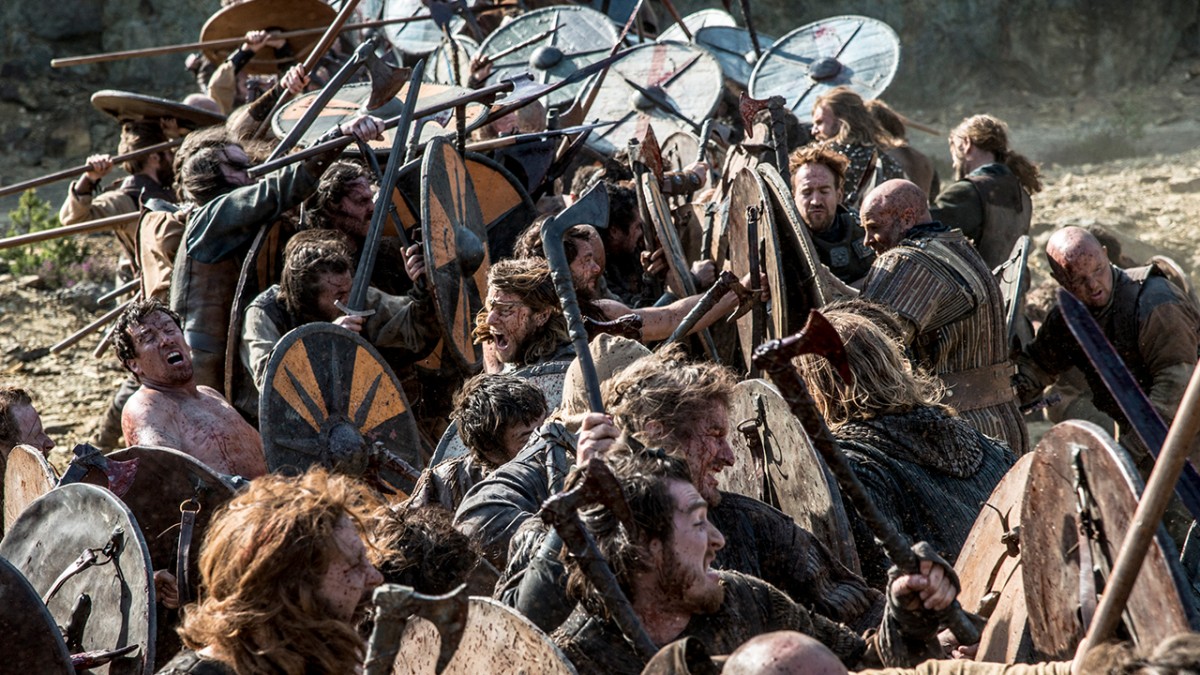Vikings were portrayed as uniformly violent and bloodthirsty by their enemies. The chronicles of medieval England portrayed them as rapacious “wolves among sheep”. Bloody raids, pillaging and deadly battles is how we see the Vikings of the age. And while this is true for many parts of Scotland (see here if you want to read about the nice, cuddly side of the Vikings!) Dundee was likely a prime target. Longboats carried Vikings from their strongholds in Orkney and Shetland towards the mainlands to assault any settlements they could reach; nowhere with water access was safe, and Dundee was surely no exception.
Local historians agree that there is evidence of Vikings in the area, and DNA analysis suggests 8% of us have Viking ancestry in our genes. One account of such an invasion is the infamous Battle of Barry, said to have taken place in 1010. The first account of the battle is by Hector Boece, a 16th century historian. Sueno, king of Denmark and England, uphappy with the news of his army’s defeat at Mortiach, ordered a naval task force to set sail for Scotland.
The army landed at Lunan Bay and after sacking Montrose, the Army headed inland and razed Brechin to the ground. Camus received word that an army headed by King Malcolm II was in Dundee and ordered the Danes to march south. The Scots army set camp at Barry, a few miles to the east of Dundee. The two sides met and fought at the Lochty Burn, which is now where the Carnoustie town centre lies. The battle was fierce and raged on for many hours, so much so that the burn ran red with the blood of Scots and Danes.
On the losing end of the battle, Camus fled to the hills but was caught and killed by Robert de Keith at Brae Downie, where, it is said, the Camus Cross was erected in memory of him (http://en.wikipedia.org/wiki/Camus_Cross)

The battle also inspired a legend of the naming of Carnoustie. The Norse gods were so incensed by the loss of their favourite warrior that they put a curse on the neighbourhood, letting thousands of crows loose across Barry. The crows colonised the whole area around what is now Buddon Ness their numbers swelling so large that the area became known as Craw’s Nestie, which was later altered to Carnoustie.
When the village of Carnoustie gained burgh status in 1899 the local officials created a crest for the town featuring three crows flying over a tree. Crow’s continue to feature in the town’s stories and events, with the Craw’s Nest Tassie (http://www.carnoustiegolflinks.co.uk/tournaments/craws-nest-tassie) golf tournament – and there are still large numbers of crows in the area.

Many bodies have been uncovered from mediaeval times in the Carnoustie area, many of them who seem to have been slain in battle with limbs hacked off. In the 16th Century Raphael Hollinshed claimed that the bodies were those of the Danes killed in the Battle of Barry. However, later evidence uncovered by historians in the 19th century showed many of these graves to be of Pictish origin, and likely belonged to those living in the area, with battles between Picts and Scots a common affair.
Sadly all that remains of the battle are these stories, which, due to becoming lost in time, the battle itself is now regarded to be apocryphal (of doubtful authenticity, although widely circulated as being true). No other written evidence of Camus exists, and it is likely to be a misunderstanding of the name ‘Camuston’ which was a village in the area at that time. The Camus Cross was also later discovered to be a Pictish era monument, likely named for the nearby village. A burial was found near the Camus Cross in the 17th century, believed to be that of Camus himself. The skeleton was described as huge with a sword wound on the back of the head the likely cause of death. What was found here was supposedly taken to Brechin Castle at the time, but little other information remains.
Whether the details of the battle are correct, there can be no doubt that Vikings visited the area, and it was unlikely that no blood was shed. The legend of the battle lives strong in the tales and stories of the area, and maybe next time a flock of crows flies overhead, you just might wonder if the Norse gods are still angry at the loss of their fearless warrior.
OR


Hi Stewart
I trust you and Helen-Louise are doing well.
Our sister cities colleagues in Alexandria USA, are working on a project on Viking influence with their sister cities of which Dundee is one.
They have sent me a link to your page that talks about the Viking battle in Barry and Carnoustie and wondered if I could put them in touch with you so they can explore this with you.
Do you have an email address I could send them please if you are happy to have a virtual chat.
Regards
Gary Langlands